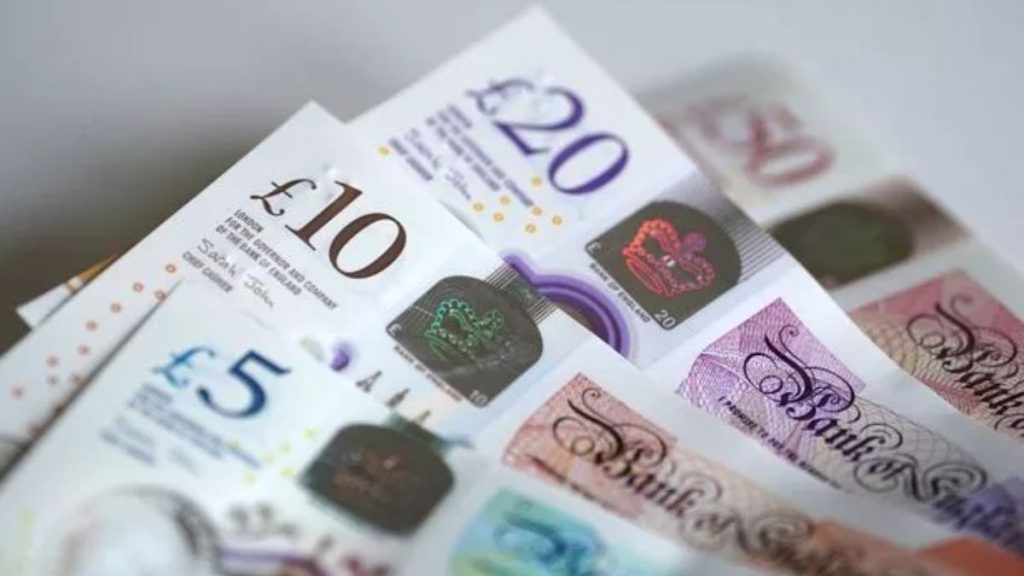From April 2025, the UK government will increase the personal allowance to £20,000, marking one of the biggest tax changes in years. This means that workers, pensioners, and many families will be able to keep more of what they earn. For millions, this increase comes at a crucial time when the cost of living remains high and household budgets are still under strain.
If you pay tax, understanding how this change works will help you calculate how much more money you’ll take home each year and how this reform could reshape your financial outlook.
What Is the Personal Allowance?

The personal allowance is the amount of income you can earn tax-free each tax year before income tax applies. For the 2024–2025 tax year, this amount stands at £12,570, meaning any income above that threshold is taxed based on the UK’s income tax bands.
However, from April 2025, the government will raise the personal allowance to £20,000 — a major step that will allow millions to earn more before paying any tax. This marks a significant shift in UK tax policy aimed at boosting disposable income for working individuals and pensioners alike.
In simpler terms, this move means that everyone will be able to keep a larger share of their earnings, reducing their overall tax burden and increasing monthly take-home pay.
Why the Change Matters
This tax reform comes at a time when many UK households are still feeling the effects of inflation, high energy costs, and rising food prices. Increasing the personal allowance is a strategic move to help people cope with ongoing financial challenges.
The change ensures that a larger portion of your income remains completely tax-free, offering tangible relief in real terms. For the average worker, the new allowance could mean hundreds of pounds extra per year, which could be redirected toward essentials such as groceries, transport, or utility bills.
For pensioners, part-time employees, and low-income earners — the groups most affected by inflation — this measure provides welcome breathing space, helping them manage daily expenses without financial stress.
Broader Financial Benefits
Aside from reducing tax bills, the increased allowance will likely generate a ripple effect on the wider economy. More disposable income gives individuals a better chance to build emergency savings, pay off debts, or contribute more toward retirement funds.
Economists suggest that when households have extra income, it can also boost consumer spending — a key factor for economic growth. Although modest on paper, the £7,430 tax-free increase could translate to stronger financial security and confidence among millions of UK citizens.
Who Will Benefit the Most
While the tax cut benefits almost all taxpayers, certain groups stand to gain the most from this reform:
- Low-income earners – They’ll be able to keep a much larger share of their pay, which can significantly improve monthly budgeting.
- Pensioners – Many retirees live on modest fixed incomes, and a higher tax-free threshold will directly increase their disposable income.
- Part-time workers and families – Those juggling part-time jobs or shared family incomes will notice a visible improvement in take-home pay.
This reform is especially designed to target the groups that have faced the brunt of high living costs, ensuring the policy has both economic and social impact.
How Much More Will You Take Home?
Your exact savings depend on your earnings, but the change offers a substantial boost across most income levels.
For instance:
- A person earning £25,000 currently pays tax on £12,430 (income above £12,570). After April 2025, they’ll pay tax only on £5,000 — saving roughly £1,400 per year.
- Someone earning £18,500 will no longer pay any income tax at all, as their entire salary will fall within the new £20,000 threshold.
- A couple where both partners earn £25,000 will together save close to £3,000 annually, providing much-needed relief amid high household costs.
The change is particularly beneficial for those earning under £40,000, as the savings are proportionally greater compared to higher earners.
Impact on Pensioners
For retirees, this policy change offers crucial support. Pensioners often rely on fixed incomes from the State Pension, private pensions, or small savings — all of which can be heavily impacted by inflation.
Under the new system, the first £20,000 of pension income will be completely tax-free. This gives older citizens more control over their finances, allowing them to stretch their budgets further for essentials like heating, food, and healthcare.
The move is being widely seen as a positive step toward supporting older citizens during a period of rising living costs and increasing energy demands.
Effects on Middle-Income Earners
Middle-income earners — typically those making between £30,000 and £50,000 — will also benefit. While they already pay higher amounts of tax, the new allowance still means that their first £20,000 is tax-free, leaving more disposable income each month.
For these households, especially those with mortgages or childcare costs, the savings could provide vital financial breathing room and help offset other rising expenses.
It’s a policy that rewards the working population while maintaining progressive taxation principles.
What About High Earners?
For those earning over £100,000, the impact will be smaller. This is because the personal allowance gradually reduces (or “tapers”) for very high incomes.
Nevertheless, even high earners will benefit slightly, as the first portion of their income remains tax-free before tapering applies. The main focus of the reform, however, remains on helping low- and middle-income groups, who feel the greatest strain from the cost of living crisis.
National Insurance and Other Deductions
It’s important to remember that National Insurance (NI) contributions are separate from income tax. The new personal allowance affects income tax only — NI thresholds and rates will remain unchanged unless further reforms are announced.
That said, the net outcome is still positive. Even after NI contributions, most workers will see a visible increase in take-home pay from April 2025, as income tax makes up a significant portion of deductions for most earners.
Example Scenarios
Here’s how the new allowance will affect different income levels:
- £18,500 earner: Pays no income tax under the new system.
- £25,000 earner: Saves around £1,400 per year.
- £30,000 earner: Pays tax on £10,000 instead of £17,430 — saving nearly £1,486 annually.
- £50,000 earner: Still benefits, though savings are smaller in relative terms.
This adjustment ensures that everyone from entry-level employees to skilled professionals enjoys a tangible improvement in disposable income.
Regional Impact Across the UK
The personal allowance increase applies nationwide, covering England, Wales, Northern Ireland, and Scotland. However, since Scotland has a different income tax structure, the precise savings may vary slightly.
Scottish taxpayers will still benefit from the higher personal allowance, but their tax rates and bands differ from the rest of the UK. For most workers in England and Wales, the benefits are straightforward and easily reflected in pay packets from April 2025.
What It Means for Families
For families, the benefits can multiply quickly. If both partners are employed and earn around £25,000 each, their combined tax savings could reach £3,000 per year.
That extra money could cover childcare costs, energy bills, or school expenses — providing financial stability and helping families manage everyday pressures more easily
Connection to the Cost of Living Crisis
The timing of this announcement is significant. With inflation still affecting essentials and interest rates keeping household costs high, the government’s decision aims to ease economic pressure without cutting services.
This policy complements other cost-of-living measures, reinforcing the government’s commitment to help households keep more of their hard-earned money.
How to Check Your Take-Home Pay
You don’t need to do anything to benefit from this change. From April 2025, your employer’s PAYE system or your pension provider will automatically apply the updated tax code.
You can also check your new tax calculation using the HMRC online calculator, which helps estimate take-home pay under the revised personal allowance.
Possible Downsides and Economic Concerns
While most taxpayers welcome the increase, critics argue that it may reduce government revenue and put additional pressure on public services such as the NHS and education.
Economists note that while tax relief helps individuals in the short term, it can also widen fiscal deficits if not paired with offsetting measures. Nevertheless, supporters argue that the economic boost from increased consumer spending could help balance the impact.
How to Plan Your Finances
With more take-home pay, experts recommend revisiting personal budgets. The additional income could be used to:
- Build emergency savings
- Pay off credit card or loan debt
- Contribute extra to a pension or ISA
- Manage rising living costs effectively
For pensioners, this additional amount may help manage heating costs or medical expenses. Using this opportunity wisely can improve long-term financial stability.
Business and Economic Outlook
Employers are also expected to benefit indirectly. When employees retain more of their pay, there is less pressure on businesses to raise wages, which can stabilize payroll costs. Additionally, higher disposable income could boost consumer confidence and spending, positively impacting retail and services sectors.
(5) Frequently Asked Questions (FAQ)
1. What is the new personal allowance for 2025?
From April 2025, the personal allowance will increase from £12,570 to £20,000, allowing workers and pensioners to earn more before paying income tax.
2. Who benefits the most from this change?
Low- and middle-income earners, part-time workers, and pensioners will gain the most, as they will save hundreds of pounds annually in reduced taxes.
3. Do I need to apply for this new allowance?
No. The change is automatic. Your employer or pension provider will update your tax code from April 2025.
4. Does this apply in Scotland?
Yes. Scottish taxpayers will also benefit from the higher personal allowance, though exact savings may vary due to Scotland’s separate tax bands.
5. Will National Insurance change too?
No. This update affects only income tax. National Insurance thresholds remain unchanged unless separately reviewed.




















